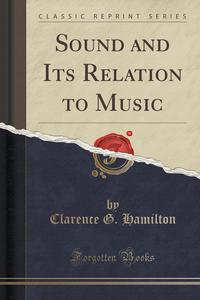Excerpt from Sound and Its Relation to Music
Every intelligent musician should be familiar with the physical laws which underlie his art. In the following pages will be found a compact statement of these laws and of the chief facts, theories and experiments in accordance with which they have been formulated. The nature and transmission of sound, its various elements and manifestations, the musical materials derived from it and the application of these materials in the construction of instruments are some of the matters discussed.
In order to facilitate further reading in regard to any of the subjects broached, references are given at the end of each chapter to correlative parts of important works on acoustics, of which a list is appended. Abstruse mathematical works like those of Airy or Lord Rayleigh are excluded. Books are referred to in individual chapters simply by the last names of their authors.
Scientists and musicians have been slow in cooperating, and at times have even antagonized each other. It is hoped that in the future mutual helpfulness will take the place of distrust, and that due allowance may be made by either party for slight points of divergence between mathematics and aesthetics. That the present book may aid toward this result is the earnest wish of its author.
About the Publisher
Forgotten Books publishes hundreds of thousands of rare and classic books. Find more at www.forgottenbooks.com
This book is a reproduction of an important historical work. Forgotten Books uses state-of-the-art technology to digitally reconstruct the work, preserving the original format whilst repairing imperfections present in the aged copy. In rare cases, an imperfection in the original, such as a blemish or missing page, may be replicated in our edition. We do, however, repair the vast majority of imperfections successfully; any imperfections that remain are intentionally left to preserve the state of such historical works. Это и многое другое вы найдете в книге Sound and Its Relation to Music (Classic Reprint) (Clarence G. Hamilton)
